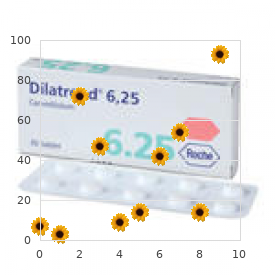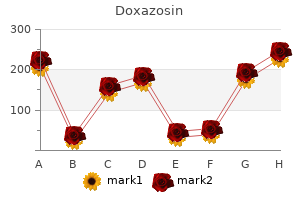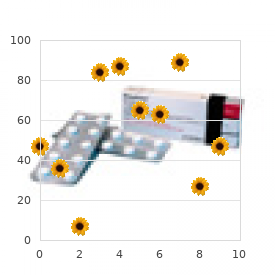Doxazosin
"2 mg doxazosin with visa, gastritis diet yogurt".
By: C. Hamil, M.B. B.CH., M.B.B.Ch., Ph.D.
Assistant Professor, The University of Arizona College of Medicine Phoenix
Some physicians will incorporate testing for autoimmune diseases gastritis juicing recipes purchase 1 mg doxazosin fast delivery, such as antinuclear antibody tests gastritis symptoms nhs direct cheap 4 mg doxazosin otc, in the evaluation of cytopenia gastritis diet food recipes discount 4mg doxazosin free shipping, although it is rare that cytopenia is the only presenting finding for autoimmune disorders gastritis diet example order doxazosin with a visa. Supportive care remains the mainstay of therapy, including transfusion of red cells with chelation therapy to prevent iron overload, prevention and treatment of infection, and transfusion of platelets for clinically significant bleeding. The rationale for the use of pyridoxine, a cofactor in heme biosynthesis, is the potential for improvement in ineffective erythropoiesis. Despite anecdotal reports of responses to each, clinical trials do not support their general use. Thus far, there is no known survival benefit from administration of any hematopoietic growth factors, either alone or in combination. However, duration of remission and median survival were short in these studies, and it is not yet clear whether intensive chemotherapy prolongs survival. Newer chemotherapeutic agents are being investigated, but intensive chemotherapy, with or without growth factor support, can be recommended only under the auspices of a clinical trial. In one analysis of 70 patients with refractory anemia transplanted between 1981 and 1993, young age and short disease duration before transplant were favorable prognostic indicators. At 4 years, overall disease-free survival was 41%, relapse rate was 28%, and non-relapse mortality was 43%. Discussion of potential efficacy of differentiation-induction/antiapoptotic agents in myelodysplastic syndromes, and current therapeutic strategies based on risk stratification, degree of cytopenia, and age. A characteristic cytogenetic abnormality, the Philadelphia (Ph1) chromosome, is present in the bone marrow cells in more than 95% of cases. The granulocytes usually appear relatively normal, although those of many patients exhibit dysplastic changes, including Pelger-Huet anomalies. Neutrophil functions, such as phagocytosis and bactericidal activity, are largely preserved. Before effective treatment was available, patients survived, on the average, approximately 2 years after diagnosis. The relative risk has been falling since that time but is still above the expected rate for Japan. Radiologists working without adequate protection before 1940 were more likely to develop myeloid leukemia, but no such association has been found in recent studies. It is diagnosed in 1 or 2 persons per 100,000 per year and has a slight male preponderance. The Ph1 chromosome results from a balanced translocation of material between the long arms of chromosomes 9 and 22. The breakpoint in the bcr varies from patient to patient but is identical in all cells of any one patient. The Ph1 chromosome occurs in erythroid, myeloid, monocytic, and megakaryocytic cells, less commonly in B lymphocytes, rarely in T lymphocytes, but not in marrow fibroblasts. These patients have a survival rate and a response to therapy that are similar to those in Ph1 -positive patients. Although 100% of the metaphases on cytogenetic analysis usually show the presence of the Ph1 chromosome, some normal stem cells must remain. Normal diploid cells emerge on long-term bone marrow culture and after treatment with interferon, high-dose chemotherapy, and autologous bone marrow transplantation. Rarely, bleeding (associated with a low platelet count and/or platelet dysfunction) or thrombosis (associated with thrombocytosis and/or marked leukocytosis) occurs. The serum uric acid level is commonly elevated at diagnosis, and acute gouty arthritis may follow treatment. An elevated blood histamine level (related to the basophil cell mass) can cause upper gastrointestinal ulceration and bleeding. Neutrophil function is usually normal or only modestly impaired, and neutrophil numbers are markedly increased; infections are therefore uncommon at the time of diagnosis. Priapism is occasionally noted, usually in patients with marked leukocytosis or thrombocytosis. Hepatomegaly is less common and is usually minor (1 to 3 cm below the right costal margin).



Zinc protoporphyrin dissociates less readily from hemoglobin binding sites and persists in the red cell as long as it circulates gastritis yogurt doxazosin 2 mg low cost. Cutaneous manifestations usually begin in childhood and are distinctly different from those of other porphyrias gastritis diet ãóãë order 2mg doxazosin with amex. Burning gastritis diet of the stars purchase doxazosin with a visa, itching gastritis definition wikipedia buy cheap doxazosin 2mg line, erythema, and swelling can occur within minutes of sun exposure. Other characteristic skin changes include lichenification, leathery pseudovesicles, labial grooving, and nail changes. No fluorescence of the teeth and (except with severe hepatic failure) no neuropathic manifestations are present. Mild anemia with hypochromia and microcytosis is noted in some cases and is unexplained. Liver complications may be more likely to develop in individuals who have inherited certain ferrochelatase mutations. Intercurrent factors such as viral hepatitis, alcohol, iron deficiency, fasting, and oral contraceptive steroids have played a role in some patients. No side effects other than a mild and dose-related skin discoloration because of carotenemia have been noted. Cholestyramine may reduce protoporphyrin levels by interrupting its enterohepatic circulation. Iron deficiency, caloric restriction, and drugs or hormone preparations that impair hepatic excretory function should be avoided. Hepatic complications may resolve spontaneously if a reversible cause of liver dysfunction such as viral hepatitis or alcohol is contributing. Transfusions or heme therapy may suppress erythroid and hepatic protoporphyrin production. Splenectomy, correction of iron deficiency, and cholestyramine or activated charcoal may be beneficial. Operating room lights have produced severe skin and peritoneal burns in some patients. Dual porphyria refers to patients with porphyria and deficiencies of more than one enzyme of the heme biosynthetic pathway. An array of tests for porphyria are available, but some are subject to overuse and misinterpretation. Porphyrias can be readily detected and misdiagnoses avoided by relying primarily on a few first-line tests. In acutely ill patients, it is important to identify or exclude acute porphyria promptly. Because increases are so striking during an attack, quantitation on a random urine sample is highly informative. Total plasma porphyrins are virtually always increased in patients with active skin lesions from porphyrias. Normal plasma porphyrin levels exclude porphyria as a cause of cutaneous symptoms, especially if the measurement is carried out by a simple and direct fluorometric method. Interpretation of urine, fecal, and erythrocyte porphyrin levels is often problematic for the following reasons. Laboratory testing of relatives is not usually appropriate until test results have firmly established a diagnosis of porphyria in the propositus. These assays are not recommended for the initial screening of patients with symptoms suggestive of porphyria. The other heme pathway enzymes are mitochondrial and are not reliably measured in erythrocytes. Demonstrating a specific mutation in a family greatly facilitates the detection of relatives who carry the same mutation. Consultation with a physician and a laboratory experienced in testing for porphyrias is helpful in these situations. Laboratory data that were the basis for an original diagnosis of porphyria should remain available for future reference. Incorrect diagnoses of porphyria are not uncommon in patients with symptoms from other diseases. Not very much evidence supports recent suggestions that porphyria is common in disorders such as multiple chemical sensitivity syndrome. One of several recent and detailed reviews on the genetic, biochemical, and clinical aspects of the porphyrias.

In the clinical setting gastritis long term buy doxazosin 4mg visa, prognosis is best determined by the Pugh modification of the Child-Turcotte classification gastritis diet ùâòùëäôûûòøëø purchase genuine doxazosin on line, which includes the variables of ascites diet during acute gastritis generic doxazosin 1mg free shipping, encephalopathy gastritis diet dairy buy doxazosin canada, serum albumin, serum bilirubin, and prothrombin time. Both the Child-Turcotte and Pugh classifications correlate closely with albumin synthesis rates. Several non-invasive markers of cirrhosis measure fragments of matrix molecules in serum. By reflecting inflammatory activity, these assays may indirectly have prognostic value but do not discriminate in all cases between different stages of injury and fibrosis. Although many patients who drink heavily develop hepatic enlargement and fatty accumulation, only a minority (20%) of cases will progress to alcoholic hepatitis or cirrhosis. An average total intake required for development of cirrhosis has been estimated as the regular consumption of 80 g of ethanol per day for 20 years, but the relative risk of chronic liver disease increases substantially with as little as 40 to 60 g/day (80 g of ethanol equals eight 12-oz beers, a liter of wine, or a half-pint of spirits). Only the total dose and not the type of alcoholic beverage or pattern of intake influences progression. In females there is greater likelihood of progression to cirrhosis than in males ingesting the same relative amount of alcohol. Concurrent liver disease of any type may be an accelerant to hepatic injury in the patient who drinks heavily. An inherited predisposition to alcoholism has been clearly established, but genetically determined increased susceptibility to liver damage in heavy drinkers is less certain. Increased susceptibility to organ injury may also be associated with certain isoenzymes of alcohol dehydrogenase, the principal metabolizing enzyme of ethanol. Malnutrition may be due not only to poor intake but also to abnormal nutrient metabolism. Whereas poor nutrition may contribute to the evolution of alcoholic liver disease, adequate nutrition does not prevent its development. Steatosis, or fatty liver, is a reversible short-term consequence of alcohol toxicity. Large fat droplets fill hepatocytes, distorting the nuclei and enlarging the acinus. The lesion occurs even in well-nourished alcoholics and results from enhanced production and decreased oxidation of fatty acids within 806 the liver, as well as peripheral lipolysis with increased hepatic lipid uptake. The lesion does not predict the development of alcoholic hepatitis or cirrhosis, but subtle evidence of injury suggests it is not an innocent lesion. Connective tissue deposition around the central vein, also referred to as sclerosing hyaline necrosis, predicts a high likelihood of progression to panlobular cirrhosis. Progressive perivenular fibrosis can lead to obliteration of central veins and postsinusoidal portal hypertension. Neutrophil accumulation is relatively unique to alcoholic injury (in most forms of hepatitis, mononuclear cells predominate) and may contribute to hepatocellular injury (see Pathogenesis, later). Other common pathologic findings of alcoholic hepatitis include steatosis, bridging necrosis, bile duct proliferation, cholestasis, and mitochondrial enlargement within hepatocytes. Perivenular fibrosis often progresses to panlobular cirrhosis, which may be either micronodular or macronodular. As scarring continues, the organ shrinks because of contraction of fibrous bands by activated stellate cells. At the ultrastructural level, loss of sinusoidal fenestrations may contribute to impaired nutrient exchange across the subendothelial space between sinusoidal blood and hepatocytes, contributing to the decay in liver function. In the cirrhotic patient who continues to drink, pathologic elements of both fatty liver and hepatitis may persist. In fact, the most compelling evidence for an etiologic role of ethanol in alcoholic hepatitis is epidemiologic, not biochemical. Centrilobular hypoxia, which proposes that metabolism of ethanol acetaldehyde increases lobular oxygen consumption, leading to relative hypoxemia and cell damage in regions farthest from oxygenated blood. Neutrophil infiltration/activity, which may occur because of release of neutrophil chemoattractants by hepatocytes metabolizing ethanol. Tissue injury could ensue from neutrophils and hepatocytes releasing reactive oxygen intermediates, proteases, and cytokines. Formation of acetaldehyde-protein adducts, which serve as neoantigens, generating sensitized lymphocytes and specific antibodies that attack hepatocytes bearing these antigens.

Syndromes
- Fever (rare)
- What other symptoms do you have?
- Get more information about television and kids. The American Academy of Pediatrics website --www.aap.org -- is a good place to start.
- Obese children and adolescents have shown an alarming increase in the incidence of type 2 diabetes, also known as adult-onset diabetes.
- Transfusion reaction
- Incoherence (not understandable)
- Narrowed opening of the anus

A thorough review of the new technique of "gamma knife" radiotherapy in the treatment of pituitary adenomas gastritis diet ýéâîí purchase 1mg doxazosin otc. Data are presented on a large series of patients undergoing radiation therapy for various types of pituitary tumors gastritis symptoms australia cheap doxazosin 4 mg with amex. As a result gastritis kronis purchase generic doxazosin line, it reduces body fat gastritis y diarrea purchase doxazosin discount, increases lean body mass, and leads to positive nitrogen balance. Particularly in the setting of cortisol deficiency, there is a predisposition to hypoglycemia. The insulin tolerance test requires careful monitoring for symptoms of severe hypoglycemia, such as confusion or depressed consciousness. This test should be avoided in patients with seizure disorders or coronary artery disease. On the other hand, sex steroids (estrogen in particular) lead to epiphyseal closure and limit linear growth. Adverse effects occur at lower doses in adults compared with children, and a dose of 0. A subset of these tumors are categorized morphologically as mammosomatotroph adenomas. Molecular defects in the remaining 60 to 65% of somatotroph adenomas need to be identified. The most striking features of acromegaly usually involve the face, hands, and feet. The diagnosis is often suspected because of changes in facial appearance that include enlargement of the lower jaw (prognathism), the nose and lips, and sinuses (causing frontal bossing). Oral cavity changes including malocclusion, increased spacing between the teeth, and enlargement of the tongue may lead to recognition of the disorder by dentists. A hollow, resonant voice is caused by changes in the vocal cords and the soft tissues of the hypopharynx. Sleep apnea may occur in patients with soft tissue obstruction of the pharynx but may also occur because of a central disorder. Few acromegalic patients wear rings because they have long since outgrown them, and they usually have a history of progressive increase in shoe size and width. In addition to bony enlargement, there is a marked increase in the soft tissue of the hands and feet. Arthritis (hands, feet, hips, knees) is common (75%) and is caused by cartilage and synovial overgrowth. Skin changes include increased skinfolds, particularly over the brow and forehead. Skin tags are common, and their presence correlates with the presence of colonic polyps. Headaches, visual field defects, and other neurologic symptoms depend on the location and extent of tumor growth. Most of the increased mortality can be attributed to cardiovascular and cerebrovascular diseases and may be related in part to the increased prevalence of hypertension (25-35%) and diabetes mellitus (10-25%) in acromegaly. There is evidence for cardiac hypertrophy in the majority of acromegalics, and symptomatic heart disease, consisting of coronary ischemia and/or congestive heart failure, occurs in 15 to 20% of patients. There is an increased risk of premalignant polyps and colon cancer in acromegaly, and screening with colonoscopy is generally recommended in men, particularly those older than the age of 50 and with skin tags. Over an 11-year period there is a progressive coarsening of facial features, including enlargement of the nose and lips and development of prognathism. She also experienced hypertension, arthropathy, and enlargement of the hands (not shown). The most reliable test for acromegaly is the glucose tolerance test (Table 237-8). Correction of the disorder prevents further physical disfigurement and can result in substantial resolution of soft tissue changes and improvements in metabolic derangements. Medical therapies for acromegaly include dopamine agonists, such as bromocriptine, and somatostatin analogues, such as octreotide. Responsiveness to both of these agents depends on the presence and density of receptors on tumor cells. Octreotide is useful as adjunctive therapy in patients who are not cured by surgery and/or radiation. Longer-acting preparations of octreotide and other somatostatin analogues that can be given by intramuscular injection every 2 to 4 weeks have now become available.
Discount doxazosin 1mg visa. What causes gastritis in children ? | Health FAQs.

